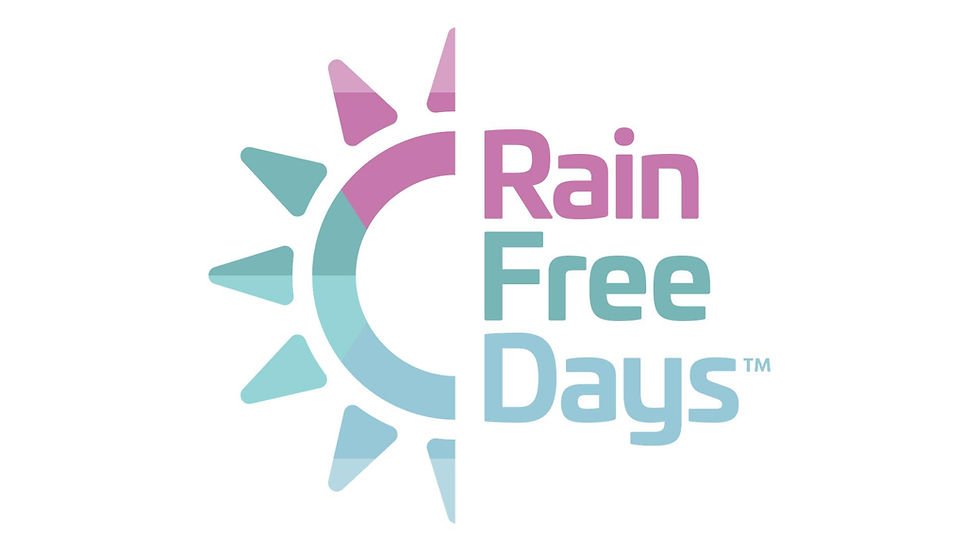Exciting red and competent blue: the power of colour in branding
- matthewhunt123
- Feb 14, 2022
- 4 min read
by Martha Roberts

You only have to watch a child selecting a toy, choosing what to eat* or picking a crayon to scribble with to see that colour is a major driver in their decision-making. But what about adults? To what extent are we influenced by colour, especially when it comes to brand identity? And does it hold any sway as a tool to influence getting people to notice, to trust and, ultimately, to buy in to a brand?
Humans are intensely visual beings. Although we may sit with a glass of wine at the end of a working day, mulling over what we discussed in a meeting or said to someone on the bus, 90 per cent of the information we process is, in fact, visual. Not only that but the human brain processes images 60,000 times faster than text and it takes just 13 milliseconds for us to process an image. One crucial aspect of this visual cognition is colour, though applied colour psychologist Karen Haller says we’re often not even aware of this.
‘Colour is an amazing phenomenon,’ says Karen in her book, ‘The Little Book of Colour’ (Penguin, 2019). ‘It is around us all the time and influences everything we do – though we are barely aware that this is happening. In fact, we are only around 20 per cent conscious of the colour decisions that we make, though we are making them all the time: about what we wear, what we eat, what we buy, how we relax, right down to how we take our morning cup of coffee.’
After it has initially hit our eyeballs and the information fed through to our brains, there are several ways that colour gets to work inside us. These include evoking personal colour associations (such as a memory of a school uniform or our childhood bedroom colour) and cultural or symbolic associations (such as an understanding that brides wear white in western weddings).
But something else also comes into play: the psychological meaning of colours. And this is significant because, unlike memory and symbolism, we often have no idea that it is happening. ‘Whereas personal association and the cultural meaning of colour is largely conscious and conditioned, the psychology of colour is largely unconscious,’ says Karen.
It is this power of the unconscious that makes colour such a powerful tool in branding and marketing. In much the same way that a famous logo like the McDonald’s arches or the Nike flash speaks to us without words - so-called associative learning - colours can shout out loud by simply being there, whether they’re on a company’s website or literature, on its packaging, staff uniforms or in its logo (does Cadbury’s purple make you want to eat chocolate?...).
In a study entitled ‘Exciting red and competent blue: The importance of colour in marketing’, participants were shown fake logos to test common assumptions about colour and emotion. And in most cases, the respondents used the same emotions to describe the logo colours, from blue being the most ‘competent’ colour, with white, yellow and pink being the most ‘sincere’ through to purple, pink and black being the most ‘sophisticated’.
This study – and a number of others relating to colour psychology and branding – suggest that the human brain develops shortcuts to process information based on repetition and these create conditioned beliefs about what a colour ‘means’, even if they’ve never encountered the brand before.
There is a caveat: because colour meanings have a personal and cultural aspect, it’s hard to translate them into an exact, reliable and replicable science. However, we can find messaging ‘patterns’ in people’s perceptions of colour without having to search too far. It is these basic ‘givens’ about a colour in relation to their industry that companies can use to give their customers reassurance about their key messages, from calm and reassuring through to outgoing, go-getting and ‘simply the best’-ness! Used appropriately, colour has the power to do great things when it comes to branding and marketing – and to influence behaviours of clients, customers and consumers, whatever their age.

How colour is used in branding
Red
Stands for: passion, energy and excitement. Good for commanding attention.
Companies that use red: Nintendo, Virgin, Coca Cola, CNN, H&M and Audi
Orange
Stands for: cheerfulness, confidence and friendliness. Good for communicating approachability and accessibility.
Companies that use orange: Easyjet, Sainsbury’s, Nickelodeon, Fanta and Penguin
Yellow
Stands for: Optimism, youth and ‘can do’. Good for communicating positivity and clarity (at worst it can be seen as attention-grabbing and can lead to feelings of irritation and even depression).
Companies that use yellow: McDonald’s, DHL, National Geographic, Post-It and Nikon
Green
Stands for: Growth, stability and prosperity. Good for communicating balance and harmony.
Companies that use green: Whole Foods, Tropicana, Starbucks, Land Rover, Spotify and BP
Dark blue
Stands for: Trust, dependability and strength. Good for communicating honesty, integrity and expertise.
Companies that use dark blue: Pfizer, Wordpress, Gap, Samsung and Ford
Light blue
Stands for: Tranquility, openness and ‘blue-sky thinking’. Good for communicating ideas and pushing out boundaries.
Companies that use light blue: Twitter, Hewlett Packard (HP), Wordpress and Skype
Purple
Stands for: Luxury and creativity. Good for communicating imagination and wisdom.
Companies that use purple: Asprey, Cadbury’s, Yahoo and Hallmark.
* Research at Cornell’s Dyson School of Applied Economics and Management in 2012 showed that children are most attracted to food plates with six different food colours on compared to adults who prefer only three colours.
About the author
Martha Roberts is a journalist, author and creator of The Colour File
Instagram @the_colour_file

About 11 London
11 London is an advertising and communications agency, based in leafy West London. We work in the areas of health and humanity - with organisations, brands or products that improve or prolong life. To learn more about 11 London, please contact:




